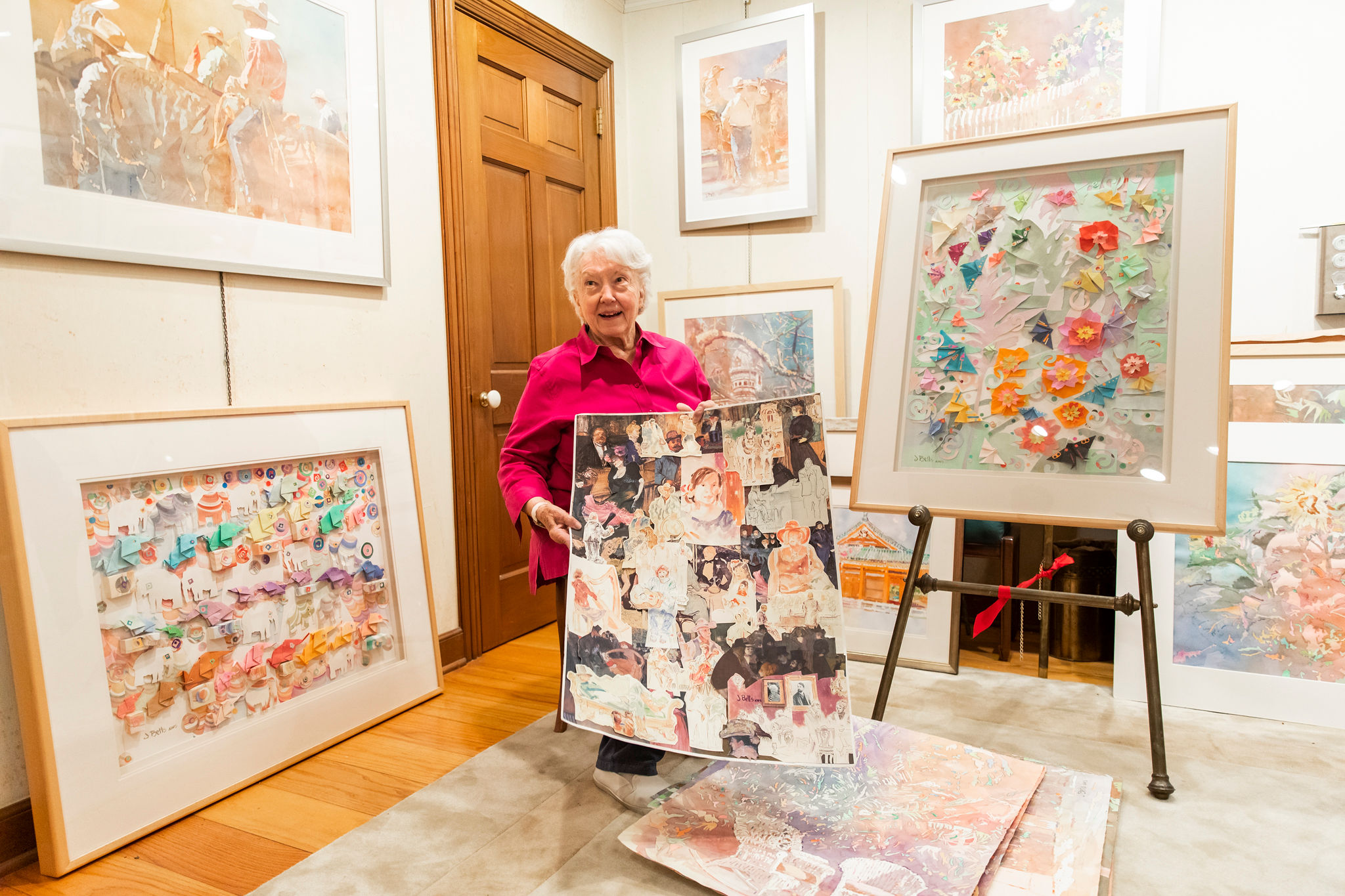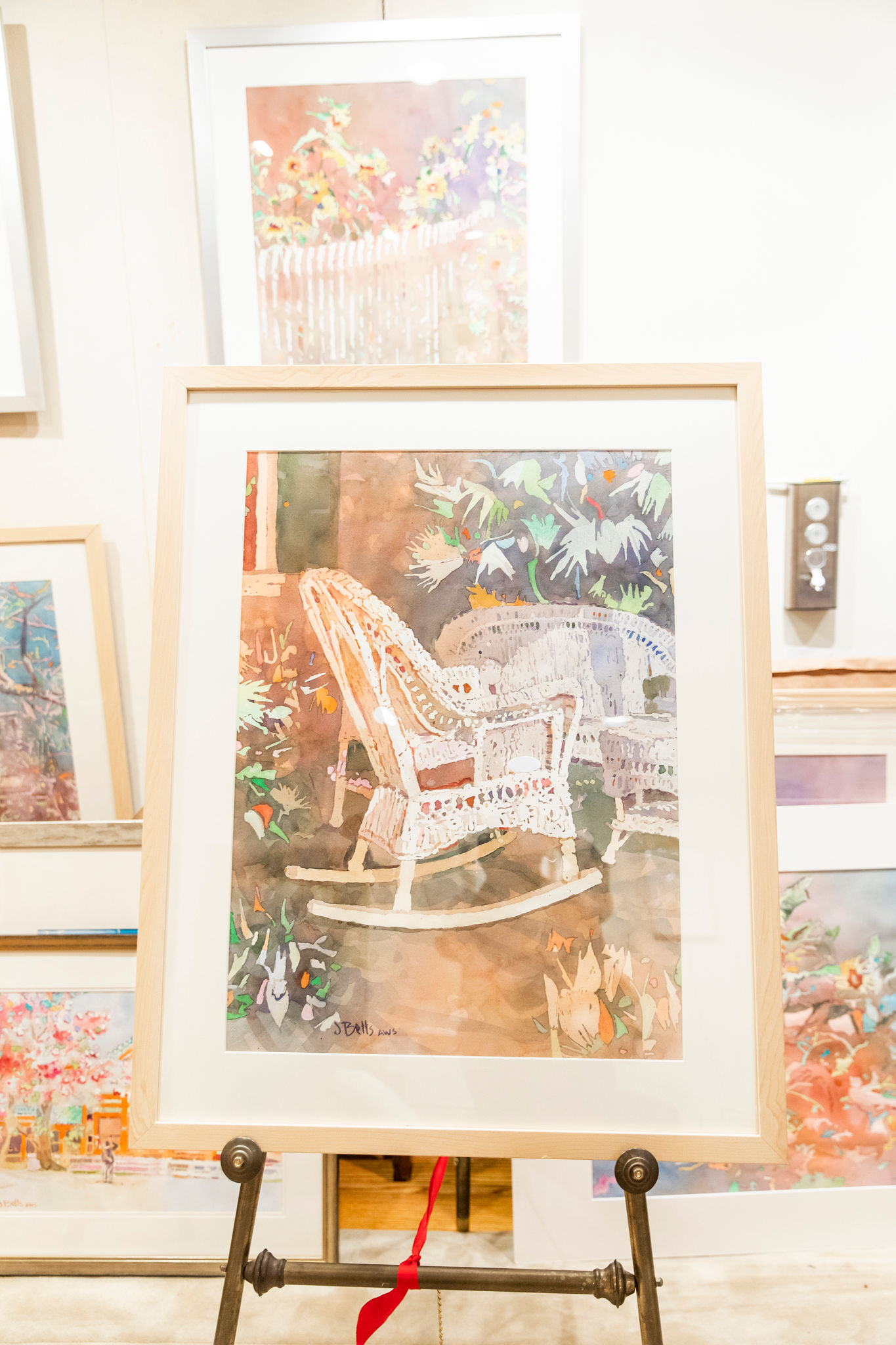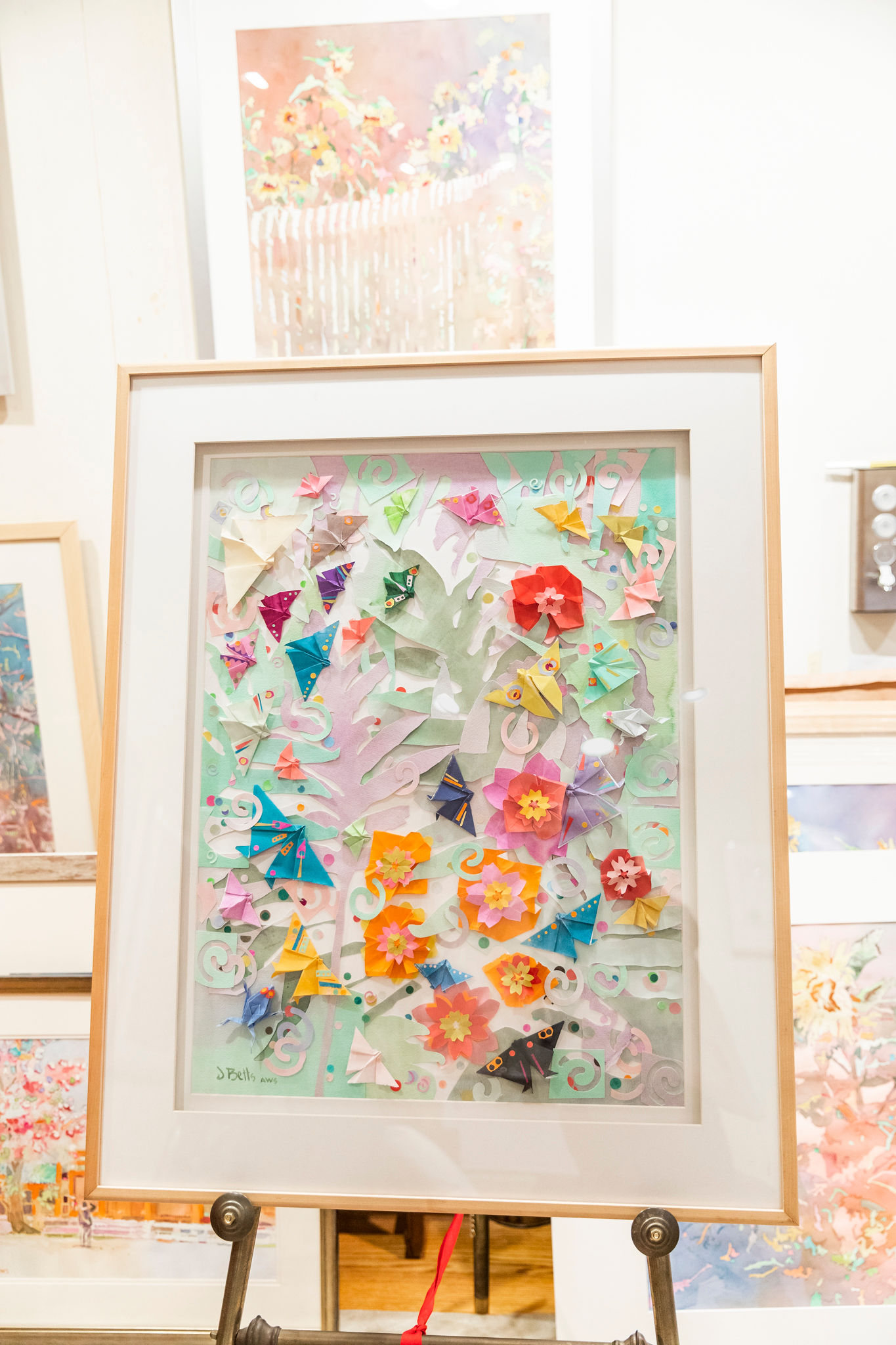
Award-winning watercolorist Judi Betts shares creative insight 60 years in the making
Art is more than the combination of colors on canvas; it’s a personal culmination of an entire lifetime of emotions and experiences. That is the philosophy 86-year-old painter Judi Betts reflects on as she continues to paint in her house tucked away in a wooded corner of Baton Rouge.
Even now after six decades of painting and teaching art, Betts is as vibrant and full of enthusiasm as ever about art and its importance to society, continuing to teach even into her late 80s.
Painting in watercolor since she moved to Louisiana from Chicago in 1959, Betts has had her artwork showcased across the world, including at the Taiwan Art Education Institute, the Federation of Canadian Artists and Walt Disney World’s EPCOT.
|
|
Her art has also graced mediums ranging from national television, DVDs, over 35 books and even wine labels, which she won five awards for. Named by the Transparent Watercolor Society of America a Master of Watercolor, she has also served as judge for over 150 national and regional competitions.
Her art, which she has received the Louisiana Governor’s Award for Professional Artists, the state’s highest artistic honor, has also been featured in the rotunda of Louisiana’s Governor’s Mansion, as well as California’s Oceanside Museum of Art and the New Orleans Museum of Art.
“I’m painting in my mind, even if I’m not at the easel,” she explains.

In a studio covered wall-to-wall in her paintings, ranging from whicker chairs and cowboys to coastal Floridian homes, Betts remembers the exact meaning and purpose behind most every piece of art she has painted, explaining that she has anywhere from two to 10 paintings in various stages of completion at any time.
“All creative people tend to work in a series,” Betts says. “So lately I have been working with palm trees and boats quite a bit.”
Recently, she explains, experimentation has become a regular part of her artistic routine. One of her recent forays into tampering with the traditional formula has been 3D paintings that combine negative space with colorful depictions of butterflies to create a new viewing experience depending on the angle one views the piece at.
Perspective also helps Betts’ creative process in the painting stage, utilizing various perspectives to achieve the optimal subject, even if it isn’t exactly true to life.
“I’m accustomed to using a mirror,” Betts says. “I look at them in the mirror because you can see them backwards and you can see your composition and say ‘oh, this needs to be darker,’ or ‘oh, this needs to be bigger.’”
Originally born in Chicago in 1936, Betts and her twin sister Janet grew up on a dairy farm before attending college at Indiana University studying jewelry making.
While her career making jewelry didn’t blossom after college, it was her early life on a dairy farm that become one of her central muses in her later career; even today, she paints farm animals, specifically cows and goats.
However she also incorporates nonconventional influences into her work. Betts spent a good part of the 20th century studying artists from across the country to refine her craft, most notably in California where she studied with “some of the most unusual, creative and well known people,” including architects, as well as fellow water colorist Milford Zornes and other members of the California Scene Painting movement.
After studying the craft, the best compliment she has received, she says, was that her paintings look unusual. To her, that means she was able to take an ordinary subject and look at it in an entirely new light.
“My paintings should look like me, so I love it when people say that,” explains Betts, who feels paintings should be as unique as one’s handwriting. “Or when they flip through a book and say, ‘Oh I saw your painting.’ It’s recognizable.”
Betts is also a prolific teacher of art. First teaching art over 60 years ago at East Ascension High School, she was the first art teacher hired in the parish before retiring in 1985.
Six decades later, she has taught more than 425 workshops across the world, including in Norway, Italy, the Czech Republic and every U.S. state with the exception of South Dakota and Delaware.
The most important thing she teaches her students, she explains, is experimentation and finding one’s own style.

“I want them to have fun like how I have fun,” Betts says. “I want them to invent… I try to steer them to not chose something that difficult.”
When she teaches she wants to make the process fun. For her, art is not supposed to be a methodical practice in technique, but a window into the soul of the artist focused through paint.
“Teaching has to do with sharing,” Betts says. “Teaching adults now is almost like having a party every day. We have fun, I invent things for them to do, I bring models in.”
She also wants to pass on lessons in persistence. Looking out at the oasis she has called home for the past few decades, she reiterates that “if you wanna paint, you have to paint.”
“If there’s a slight feeling towards it [you should paint],” Betts says. “People who are interested in it, they should pursue it and the harder they work, the better they get.”
|
|
|



